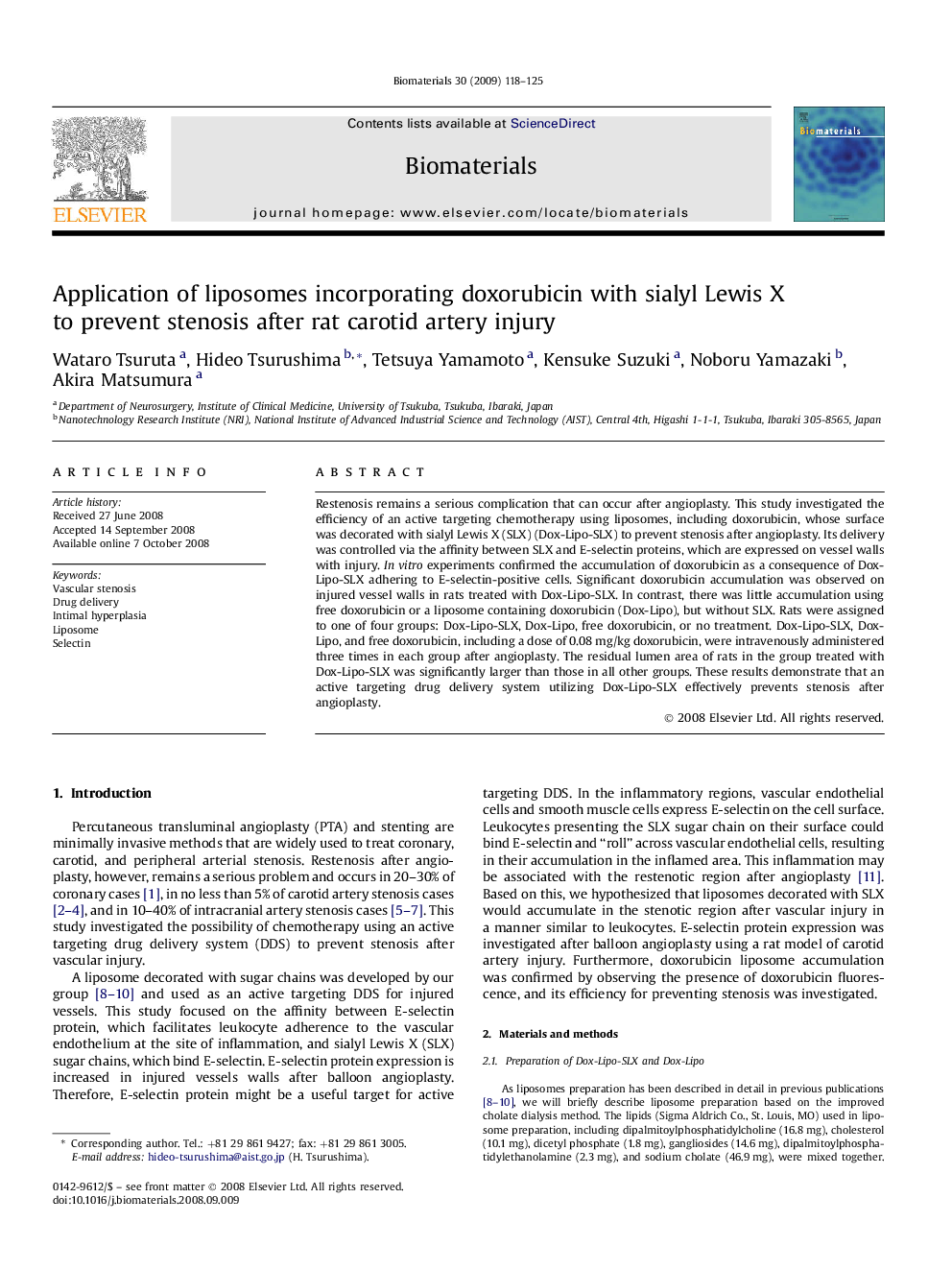| Article ID | Journal | Published Year | Pages | File Type |
|---|---|---|---|---|
| 9532 | Biomaterials | 2009 | 8 Pages |
Restenosis remains a serious complication that can occur after angioplasty. This study investigated the efficiency of an active targeting chemotherapy using liposomes, including doxorubicin, whose surface was decorated with sialyl Lewis X (SLX) (Dox-Lipo-SLX) to prevent stenosis after angioplasty. Its delivery was controlled via the affinity between SLX and E-selectin proteins, which are expressed on vessel walls with injury. In vitro experiments confirmed the accumulation of doxorubicin as a consequence of Dox-Lipo-SLX adhering to E-selectin-positive cells. Significant doxorubicin accumulation was observed on injured vessel walls in rats treated with Dox-Lipo-SLX. In contrast, there was little accumulation using free doxorubicin or a liposome containing doxorubicin (Dox-Lipo), but without SLX. Rats were assigned to one of four groups: Dox-Lipo-SLX, Dox-Lipo, free doxorubicin, or no treatment. Dox-Lipo-SLX, Dox-Lipo, and free doxorubicin, including a dose of 0.08 mg/kg doxorubicin, were intravenously administered three times in each group after angioplasty. The residual lumen area of rats in the group treated with Dox-Lipo-SLX was significantly larger than those in all other groups. These results demonstrate that an active targeting drug delivery system utilizing Dox-Lipo-SLX effectively prevents stenosis after angioplasty.
